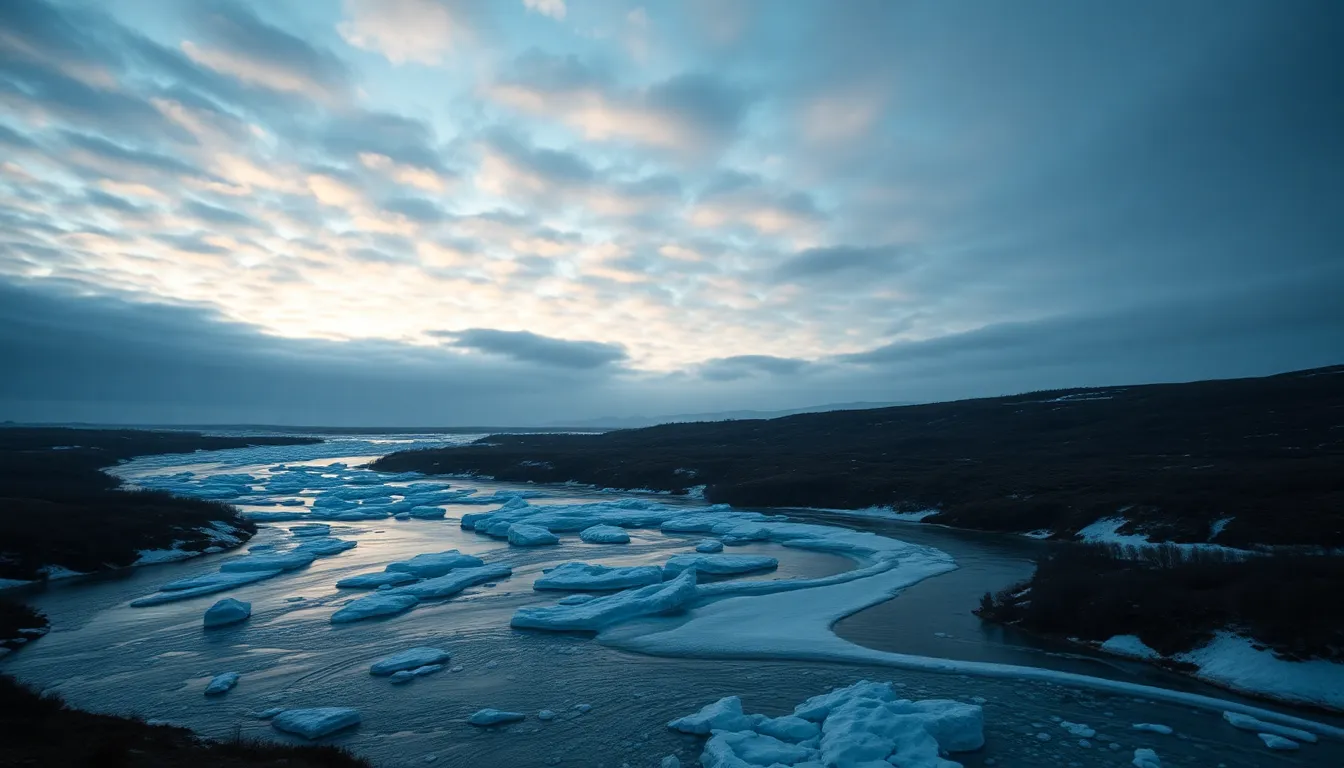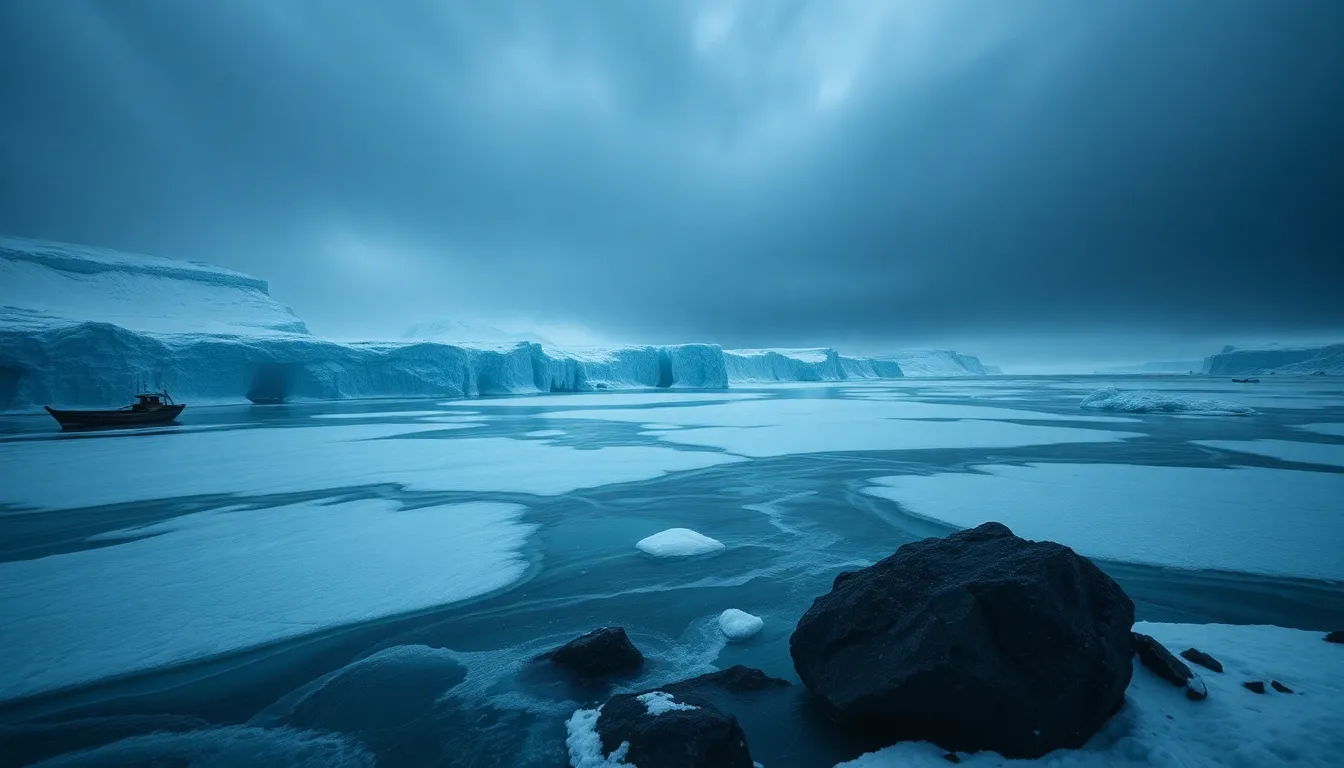The Floods of the Arctic: Tales from the Frozen North
I. Introduction
The Arctic region, often viewed as the last frontier of pristine wilderness, holds immense significance not only for its unique ecosystems but also for its role in the global climate system. This vast, frozen expanse is home to diverse wildlife and Indigenous communities that have thrived for millennia. However, climate change has introduced a worrying phenomenon: floods in the Arctic.
This article aims to explore the causes and impacts of flooding in this fragile environment, sharing stories from communities that have experienced these changes firsthand. By understanding these events, we can better appreciate the interconnectedness of climate systems and the pressing need for awareness and action.
II. Understanding the Arctic Environment
The Arctic is characterized by its extreme climate and unique geography, which include vast ice sheets, tundra, and permafrost. The region experiences long, harsh winters and brief summers, during which melting occurs. The formation and melting of sea ice play a crucial role in regulating the Earth’s temperature and weather patterns.
Historically, flooding events in the Arctic have been rare, but as global temperatures rise, the frequency and intensity of these events are increasing. Understanding the dynamics of the Arctic environment is essential to grasp why flooding is becoming more prevalent.
III. Causes of Flooding in the Arctic
The rise in flooding incidents in the Arctic can be attributed to several interlinked factors:
- Climate change and rising temperatures: The Arctic is warming at more than twice the global average, leading to significant changes in weather patterns.
- Melting glaciers and permafrost thawing: As glaciers melt, they contribute to rising sea levels, while thawing permafrost releases stored water.
- Changes in precipitation patterns and extreme weather events: Increased rainfall and snowmelt can overwhelm local drainage systems, leading to flooding.
IV. Human Impact and Vulnerability
Indigenous communities in the Arctic have a profound connection to the land, relying on it for their livelihoods, culture, and identity. As flooding becomes more frequent, these communities face numerous challenges:
- Infrastructure challenges: Many homes, roads, and transportation routes are built on permafrost, which is now unstable due to thawing.
- Economic implications: Local industries, particularly fishing and tourism, are threatened by changing ecosystems and increased flooding.
V. Ecological Consequences of Arctic Flooding
The ecological impacts of flooding in the Arctic are far-reaching:
- Effects on wildlife habitats: Flooding disrupts habitats, affecting species migration patterns and breeding grounds.
- Changes in freshwater ecosystems: Increased sediment and nutrient loads can harm freshwater species and alter aquatic ecosystems.
- Long-term ecological shifts: The ongoing changes may lead to biodiversity loss and shifts in species composition.
VI. Tales from the Frozen North: Personal Stories
Personal narratives from affected residents highlight the human dimension of flooding in the Arctic:
- Interviews with locals: Many share experiences of sudden floods that have altered their lives and communities.
- Cultural narratives: Indigenous folklore often contains references to floods, reflecting a deep understanding of nature’s rhythms.
- Case studies: Specific flooding events, such as the 2021 floods in Greenland, illustrate the immediate and long-lasting effects on communities.
VII. Mitigation and Adaptation Strategies
Communities are employing various strategies to adapt to the changing environment:
- Community resilience: Indigenous knowledge plays a critical role in developing local strategies for flood management.
- Government initiatives: Policies focusing on infrastructure improvements and emergency response plans are being implemented.
- Role of technology: Advances in monitoring and forecasting technology help communities prepare for potential flooding.
VIII. The Global Perspective on Arctic Flooding
The floods in the Arctic are not just a local issue; they have global implications:
- Connection to global climate change: The melting ice and rising sea levels contribute to worldwide climate challenges.
- International collaboration: Treaties and agreements aim to address Arctic issues and promote sustainable practices.
- Scientific research: Ongoing studies are crucial for understanding flooding dynamics and developing effective responses.
IX. Future Projections and Concerns
Looking ahead, the projections regarding flooding in the Arctic are concerning:
- Predicted trends: Experts anticipate that flooding will become more frequent and severe due to continued climate change.
- Potential long-term impacts: Rising sea levels could threaten coastal communities worldwide.
- Urgency of action: Addressing climate change is critical to mitigating future flooding risks.
X. Conclusion
Understanding the phenomenon of flooding in the Arctic is vital for comprehending broader climate challenges. The stories from communities affected by these floods remind us of the resilience of human spirit amidst change. As we confront these issues, a call to action emerges for global awareness and responsibility. The future of the Arctic—and indeed our planet—depends on our collective efforts to combat climate change and protect the delicate balance of this unique environment.




